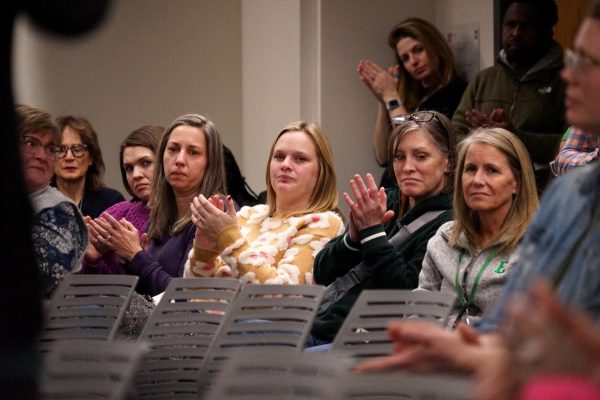The Primaries are coming! The Primaries are coming!
February 24, 2020
On February 3rd, the contest begins to determine who will be the Democratic nominee to run against Donal Trump for President of the United States. Technically, both the Democrat and Republican parties have primaries this spring. However, since the likelihood of President Donald Trump being nominated as the Republican candidate is almost guaranteed, this article will focus on the Democratic primary, where there is a lot of competition and uncertainty.
Each political party creates its own rules for how their primaries will work. Democrats have a total of 3,979 pledged delegates and divide them among the 50 states, the District of Columbia, territories and other jurisdiction. The number of delegates each state gets is based on a formula that takes into account both population and the Democratic Party’s strength in particular jurisdiction.
For example: while Massachusetts and Tennessee have similar populations and 11 votes each in the electoral college, more people vote for Democrats in Massachusetts than in Tennessee. Thus, Massachusetts has 91 pledged delegates and Tennessee has 64.
Pledged delegates are allocated in a proportional manner based on the percentage of votes received by each candidate. A candidate must receive at least 15% of the vote to receive any delegates. Those not receiving this minimum are excluded, receiving zero delegates. Currently, there are twelve Democrats running for president. However, polling data shows that there is really only a competition between the top five candidates.
The Democratic policy of requiring a minimum of 15% before a candidate can receive any delegates was instituted to promote only those candidates that are actually popular with the people, ie. forcing candidates only earning a small percent of the vote out of the primary competition. However, this policy can create quite a series of problems.
In a more historically accurate example; if we are in a state that has 100 delegates and we hold a primary. The results are: Candidate A gets 45% of the vote and Candidate B gets 38% of the vote. The remaining 10 candidates split the last 17% of the vote. In this case, Candidate A would receive 54 delegates and Candidate B would receive 46 delegates. The other candidates would receive no delegates.
In another example, let’s say the voting results are closer together. Candidate A gets 16%, Candidate B gets 15%, Candidate C gets 14%, Candidate D gets 13% etc. Again, only Candidate A and B would receive delegates. Their delegates would be split 51 to 49. This has many people concerned as to the fairness of who earned delegates based on the election result.
A more shocking potential result is if all the candidates received less than 15%. Then no candidate would be awarded a delegate from that state. Meaning all the delegates would be “unpledged” and would get to decide at the national convention.
The very first primary (called the Iowa Caucus) is held February 3rd. The first 43 delegates will be up for competition. Assuming Iowa votes according to the January 24th Real Clear Politics Poll Average Biden will get 21% of the vote followed by Sanders with 17.3%, then Warren with 16.7 and Buttigieg with 16.3. Our own Minnesotan, Amy Klobuchar is polling at 8.3% and thus would receive zero delegates.
For more information on primaries and updates on each candidate, come check out the display by room S260.









